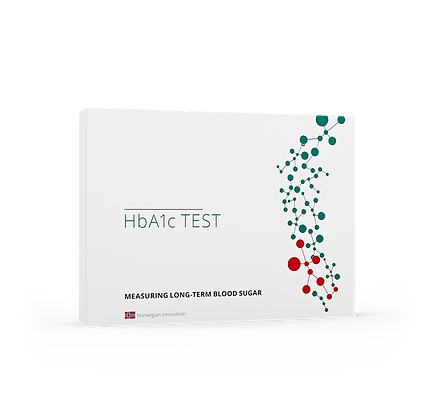
Health Testing
Start your health journey with iHomeCare using our home self test kits or have a medical professional visit you at any location.
Location Health Test:
Have a health care professional visit you today in the comfort of your own home
Balance Test:
Our finger prick blood test measures 11 fatty acids, including saturated, monounsaturated (Omega-9) and polyunsaturated (Omega-6 and Omega-3) fatty acids.

.png)
Long term blood sugar test and lifestyle assessment
Order your home delivery test or health care professional visit here:

Point of care testing
Start your health journey with iHomeCare using our home self test kits or have a medical professional visit you at any location.
Personalize your way to better health with confidential, at home health tests. Find out your current health status with our dried blood spot tests.
The Balance Test is the foundation of our Balance concept. It provides you with accurate readings of 11 fatty acid levels in your blood and your essential Omega-6:3 ratio with six different health markers. The analysis is independently managed, and the results are completely anonymous, telling you upfront if the body’s Omega nutrients are in balance. The test includes personalized recommendations and guidelines on how to restore the essential Omega-6:3 balance in your body and move forward on your health journey.
We investigate:
Omega-3 Index: The Omega-3 Index is the summary of the percentage values for the two marine Omega-3 fatty acids EPA and DHA. The ideal combined level is at least 8%, but higher values like 10% are desirable. Omega-3’s have many benefits because they are the primary building blocks in your cells. EPA is dominant in the blood, muscles and tissues, while DHA is dominant in the brain, sperm and eyes.
Cell membrane fluidity: Fluidity is calculated by dividing the percent value of the two saturated fats with the percent value of the two Omega-3’s. The fluidity value is thus defined as (PA+SA) / (EPA+DHA), and the result is expressed as a fluidity index, for example 3:1. If the fluidity value is below 4:1, it shows that there is sufficient fluidity in cell membranes. The more saturated the fats are in a membrane, the more rigid is the membrane. Conversely, the more polyunsaturated the fats are in a membrane, the more fluid is the membrane. Cell membrane composition and structural architecture is critical for the health of the cells and hence the body. On the one hand, the membrane needs to be rigid enough to provide sound cellular structural architecture. On the other hand, the membrane needs to be fluid enough to allow nutrients in and waste products out.
Mental strength: This is calculated by dividing the percent value of AA with the sum of the percent values of EPA and DHA, i.e. the Mental Strength value = AA / (EPA+DHA). The result is expressed as a mental strength value, for example 1:1. The value should be below 1:1 for sufficient and balanced supply of both Omega-6 and Omega-3 fatty acids to the brain and the nervous system. Cognitive performance improves with increased consumption of marine Omega-3’s EPA and DHA. Childhood and old age are two critical and vulnerable stages and Omega-3 deficiency is associated with learning and memory deficits, as well as mood problems.
Arachidonic acid (AA) index : The AA Index shows the measured value of the Omega-6 fatty acid Arachidonic acid (AA) as a percentage out of the total fatty acids measured. Good average values are in the range of 6.5 to 9.5% with an optimum target value of 8.3%. Arachidonic acid (AA) is the most important Omega-6 fatty acid for the body. It is the starting point for the production of local tissue hormones triggered by Omega-6, such as prostaglandins, thromboxanes and leukotrienes, all with various functions. The overall function is, however, to protect the body from damage by limiting the progression of the infection or the impact of the injury.

.png)